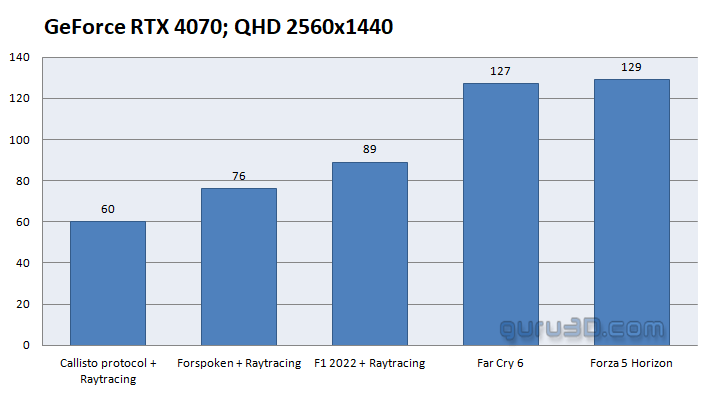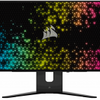Conclusion
Final Words & Verdict
While a 27-inch display size may seem modest, the monitor brings forth an engaging experience. The impeccable color fidelity of the panel delivers vivid visuals across different gaming genres, with no significant motion blur detected, even without the application of HDR functionality. Nonetheless, an activation of this feature prompted a minor setback, as a washed-out segment appeared at the center of the screen. A quick restart of the monitor proved a sufficient remedy. Upon testing various games on the recent OLED monitor from Corsair, we observed dynamic colors and a seamless gaming experience. The help of G-Sync technology (though AMD Freesync Premium is not an option) facilitated fluid gameplay, even when the frame rate dipped below 35 FPS.
The UFO test showcases no shortcomings with a refresh rate of 240Hz, providing a visually impeccable sample and holding performance at 240Hz.
 |
|
| Screen Size | 27-inch |
| Resolution | 2560×1440 (QHD) |
| Panel Type | IPS |
| Aspect Ratio | 16:9 (Widescreen) |
| Refresh Rate | 240Hz |
| Response Time | 1ms (GtG) |
| Adaptive-Sync | Yes |
Boasting a 26.5-inch QHD OLED display and a remarkable 240Hz refresh rate, the display is perfectly tailored for games though. Also, and I have to state this; the pixel density is optimal for delivering crisp and clear visuals, providing exceptional detail without the excessive demands of a 4K UHD display. The advantage here is that a lower-cost graphics card can suit your needs well. In the above example, a GeForce RTX 4070.
Concluding
The Xeneon 27QHD240 OLED is Corsair's latest contender in the OLED gaming monitor sector. We found its gaming performance, color fidelity, and overall user experience absolutely commendable. Next to being energy friendly at roughly 35 Watts, the 27-inch OLED display yielded really nice image quality and vibrant colors applicable to gaming and entertainment scenarios. The gameplay was lucid, defined, and devoid of glitches. Furthermore, the colours appeared natural and well-balanced, avoiding the excessive saturation often observed in other gaming monitors we've evaluated over the previous year. Straight out of the box the monitor is calibrated quite well. The Delta-E average reached 2.5 though (but that's still fine). The DCI-P3 coverage also allowed for good HDR results; despite only minor colour inaccuracies, we recorded 96% DCI-P3 coverage. The 240Hz refresh rate and low input lag of the monitor ensure a smooth experience, exhibiting exceptional pixel responsiveness without noticeable overshoot. It is safe to state that finding fault with the Corsair 27QHD240 gaming monitor is a challenging task, barring the need for occasional maintenance of the OLED panel to reduce the risk of screen burn-in, as the monitor does have several fail saves for that.
We do have to mention this, though, OLED may not be the ideal choice for everyone, and an LCD display could better suit those who primarily use their desktops for work. See, as a business/work monitor you will be bothered by local dimming of the entire screen, which is bothersome. Activating the automatic brightness limiter (ABL), which is a default setting) can result in a notable dimming of the panel. While it is possible to disable this feature, doing so may lead to a persistently understated and subdued visual display as the screen brightness drops even further overall to even 140 nits. It should be highlighted that this issue seems to be more pronounced while using the Windows desktop than during gaming. The variability in brightness during gameplay doesn't essentially disrupt the experience. This is a characteristic common with other OLED gaming monitors utilizing LG technology, including the Corsair Xeneon 27QHD240, which fails to provide the extra vibrancy with such settings. It's key to realize that this shortcoming isn't exclusive to the Xeneon model and is indeed a common limitation of all OLED gaming monitors (powered by LG Oled). Still, it raises concerns, especially given the monitor's substantial price tag.For those searching for a noteworthy 27-inch OLED gaming monitor, the Xeneon 27QHD240 should be a viable option. It is equipped with all the necessary features for an optimal gaming experience and some extra features for everyday use. Despite its higher-end price point, this monitor could be an investment worth your while, however, at a really serious pricetag.
Summing things up: the Xeneon 27QHD240, equipped with an LG OLED panel, facilitates an enhanced HDR experience with noteworthy response times. It further ensures a clear motion resolution, fortified by Adaptive Sync functionalities like G-Sync for Nvidia GPUs and FreeSync for AMD GPUs. The monitor does not include some gaming elements found in ASUS monitors with similar panels, but that may not be essential for most gamers. Corsair 27QHD240 also is a little less 'screamy' than the ASUS equivalent. Despite being similarly priced to other OLED monitors at approximately $1,200, the 27-inch 1440p Xeneon 27QHD240 requires a serious chunk of money. If a 27-inch OLED gaming monitor is your desired purchase, the Xeneon 27QHD240 presents a compelling option. This monitor seamlessly combines the exceptional HDR performance of OLED technology and the proper motion clarity and deep dark blacks. ABL dimming, however can be a bothersome thing when you're working in Windows or browsing your favorite websites.
- Sign up to receive a notification when we publish a new article
- Or go back to Guru3D's front page



